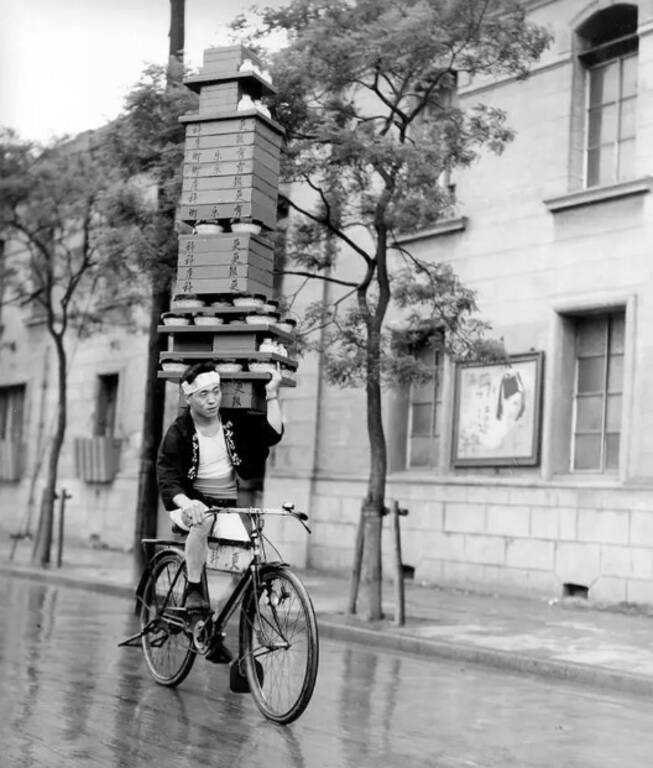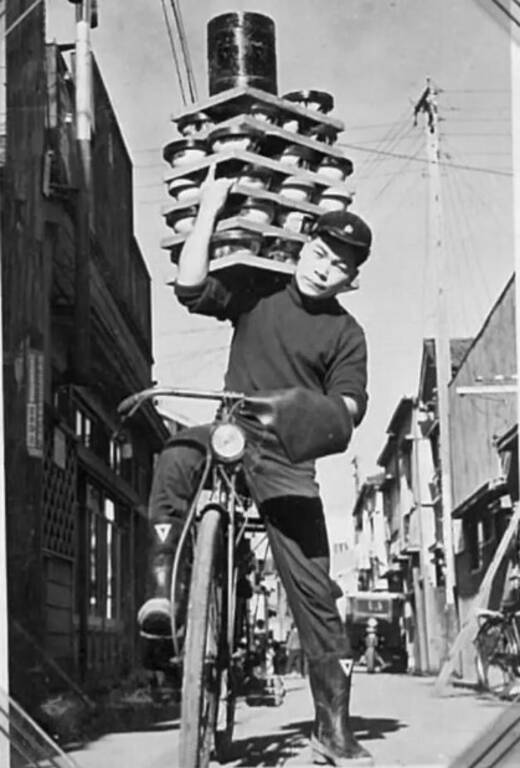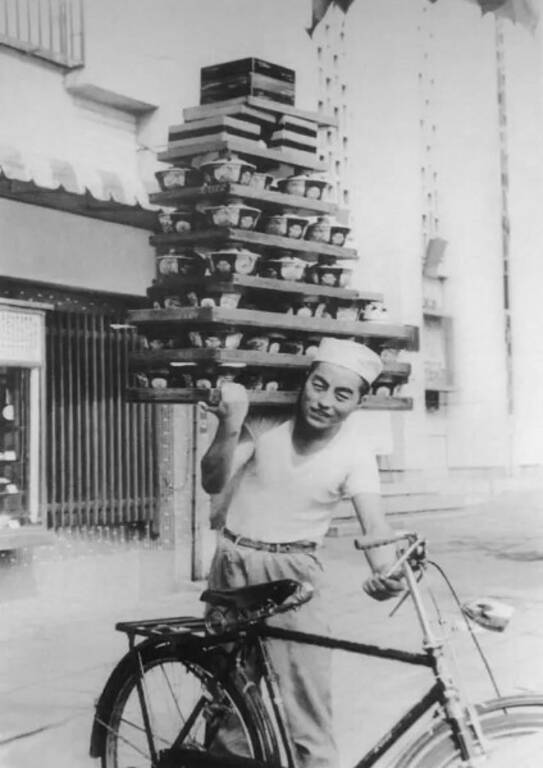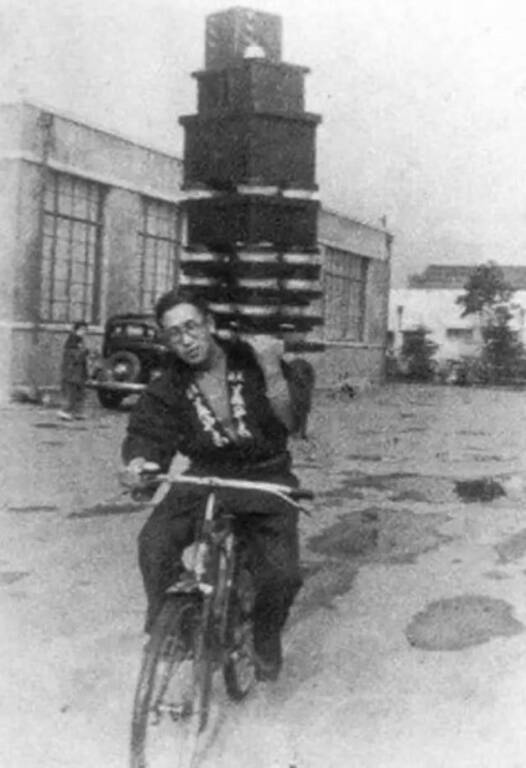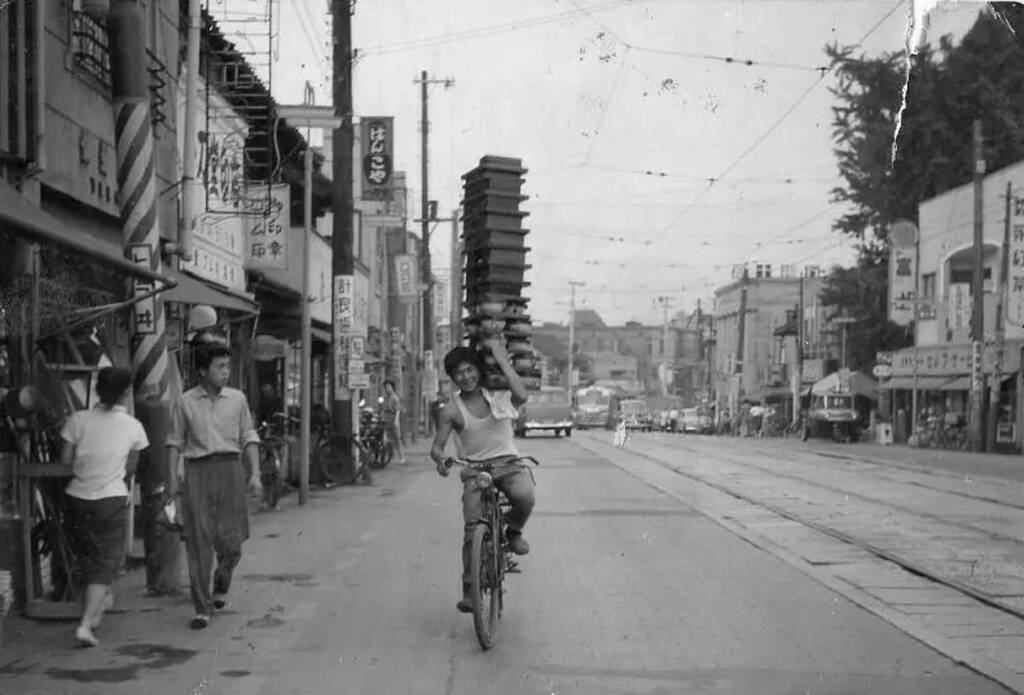
Tokyo during the Edo period, when the Tokugawa Shogunate was at the head of the country, gradually turned into a large densely populated metropolis. By the beginning of the 20th century, society had adapted to new realities: the distance between work and home was increasing, and the break was not enough to drop home for lunch. Restaurants and kitchens sprang up all over Tokyo, and couriers were hired to bring Japan's popular udon noodles and soba directly to work. Food was packaged in boxes, placed in a basket and served to customers.
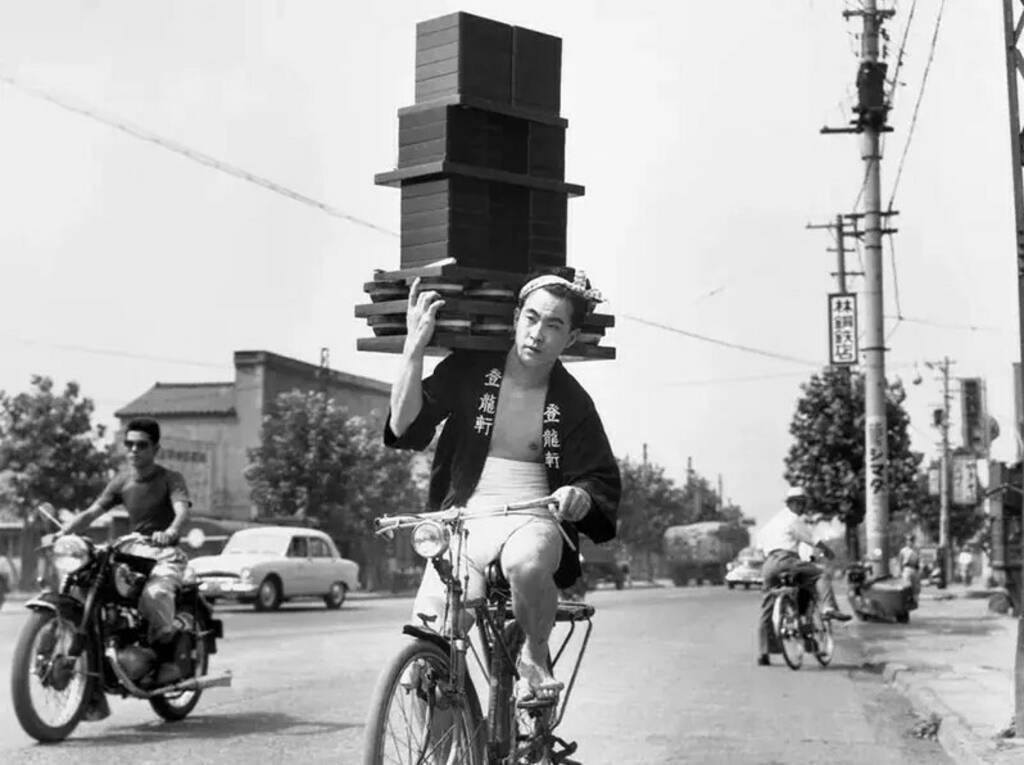
With the advent of bicycles, delivering noodles became much easier, and yet there were so many orders that couriers could barely keep up. Then they learned to build towers of food boxes: one batch consisted of several dozen servings. Until the middle of the century, this method of delivery was very popular. By steering with one hand and holding a mountain of food with the other, cyclists deftly moved among cars and pedestrians.
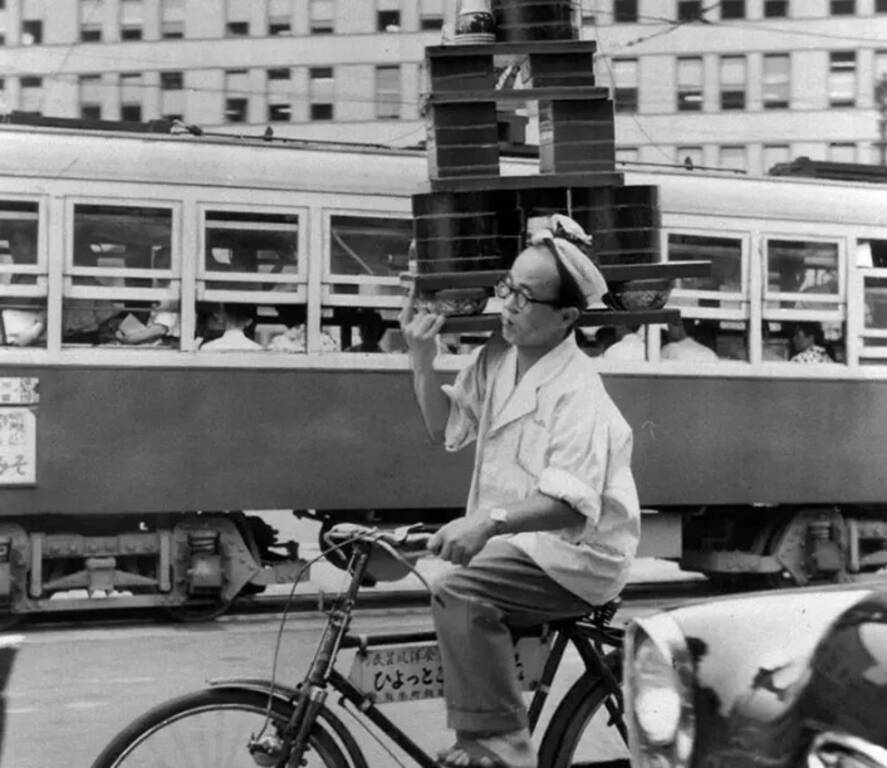
The situation changed in the 1950s, when the automobile industry began to develop rapidly, and cars became cheaper and more affordable. With the increase in the number of cars, the number of accidents involving food deliveries has increased. Things got to the point that in 1961 the government banned the use of bicycles for delivering meals in this way. The last point in this story was put on the market by the Honda Super Cub scooter, a new fast courier delivery tool.
